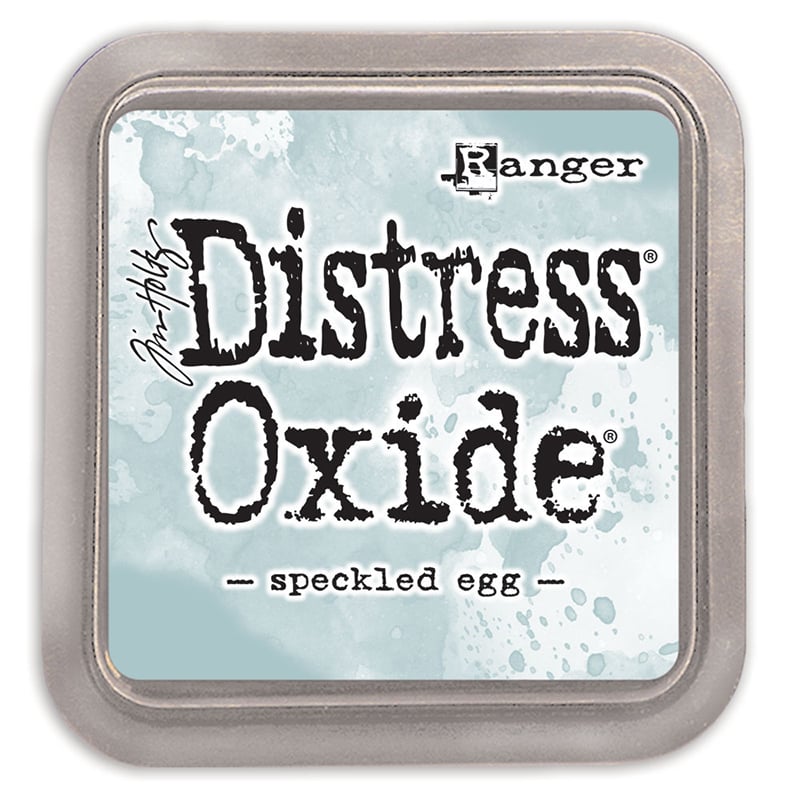8 Techniques To Get People to Click On Your Affiliate Links
If you are using affiliate links on your blog, you may have already known how challenging is to get people to click on your links and purchase the products you recommend.
You write great content, you have a targeted audience to follow you but still, you struggle with making people click on your affiliate links. Thankfully, there are some great techniques you can implement to generate as many conversions as possible through your affiliate links and of course, make money.
Here are the 8 most lucrative techniques to try, starting today.
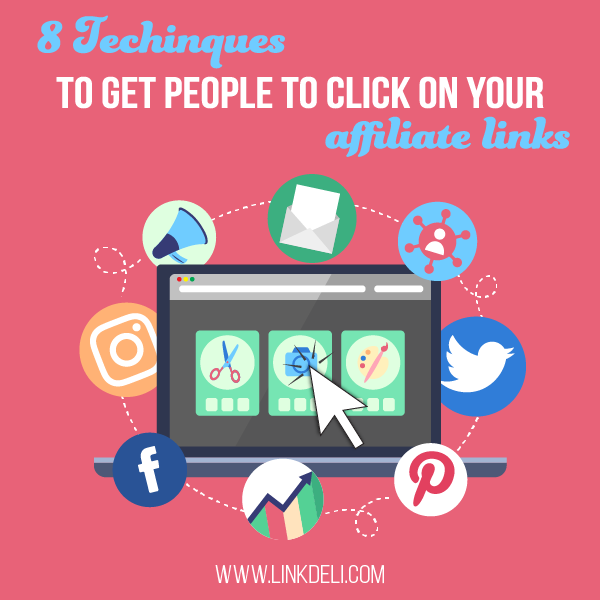
If you haven’t joined any affiliate program yet, click here to submit your application and get started. To learn how you can build affiliate links for your blog and channel, read our guide here.
8 Techniques to Generate as Many Conversions as Possible Through Your Affiliate Links
Whether you promote books, products, e-courses, or services online, below is the breakdown of the 8 best techniques that can lead to an increase in your affiliate conversion rate:
1. Visibility of Affiliate Links
When it comes to affiliate links, the first thing you need to consider is where to place them on your blog. Affiliate links should be as explicit as possible to make it easy for your followers to spot them. No one will notice, and consequently, won’t buy, if the link has been placed somewhere in a corner or on the margins of the blog.
The best place to embed your affiliate links and increase their visibility is inside a blog post. Try to incorporate them enticingly within your content and get your visitors to see them and click on them.
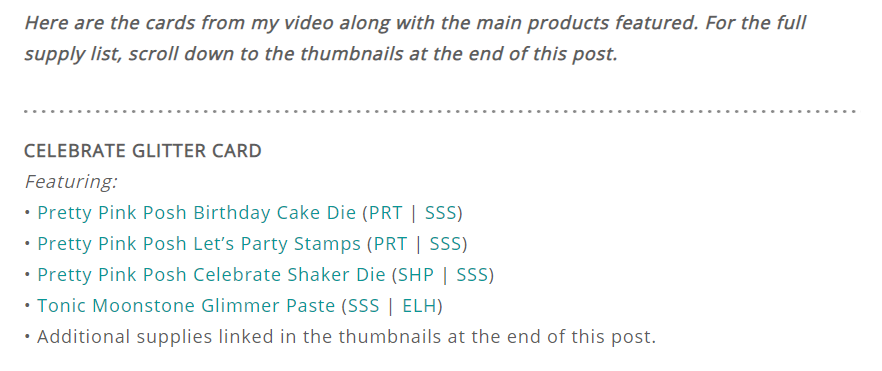 Source: https://www.jennifermcguireink.com
Source: https://www.jennifermcguireink.com
In case you want to make some affiliate links available to your readers outside of a specific blog post, you can also place them in the static sections of your blog. This way your readers can reach these affiliate links from every page of your blog, like the shops' banners in the example below:
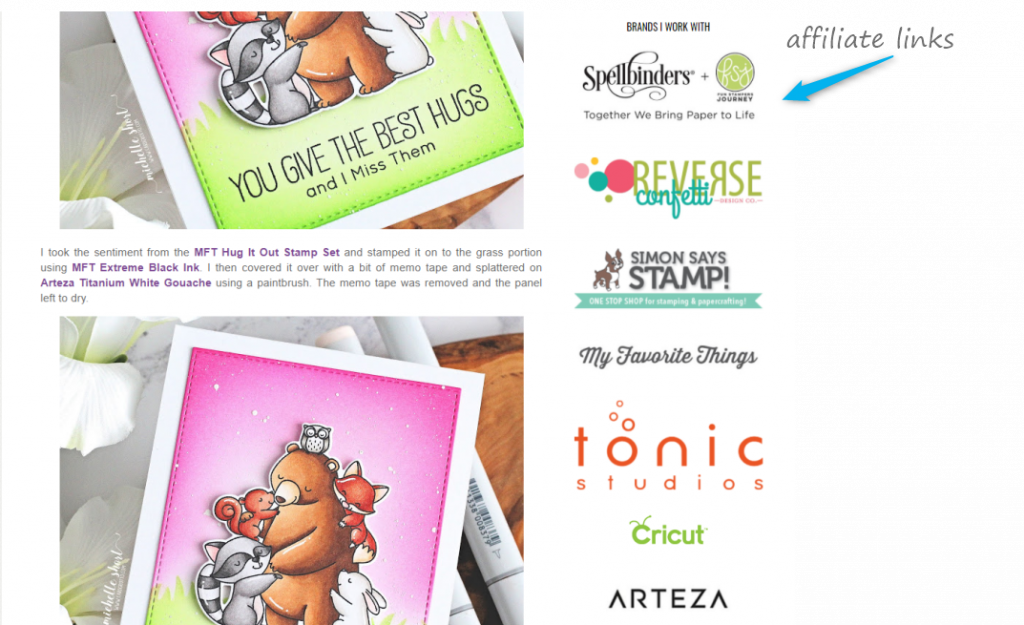
Do not miss to disclose an affiliate link statement on every page you place your links. Tell people when there are links that will make you money.
2. Make Your Links Stand Out
Be creative! Embed your affiliate links into the posts using a table or a grid with product images.
|
People love images! According to experts, visual content attracts audience attention, so if you want to increase your chance of generating clicks to your products, optimize your affiliate link with clickable images of the products you recommend. Change the colors, the size, the description of the products, and configure a unique style for your affiliate links. Make variations to best fit into your blog and stand out. The more appealing affiliate links you create, the more chances you get to generate clicks.
3. Spreading Your Links throughout Your Posts
One of the best ways to drive more clicks and traffic to your affiliate links is to intersperse your posts throughout with affiliate links.
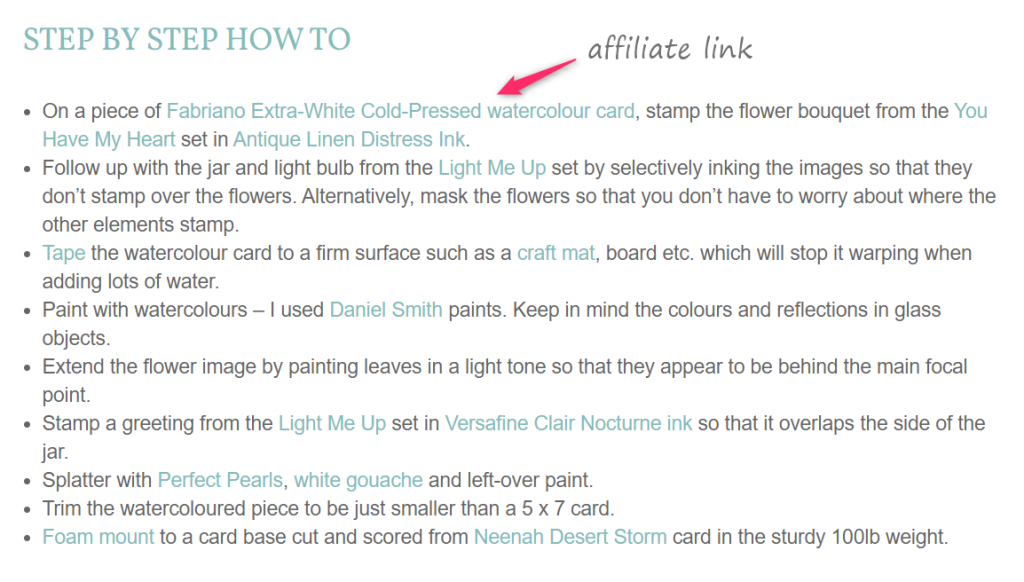 Source: https://limedoodledesign.com/
Source: https://limedoodledesign.com/
In addition to thumbnail links, embellish your content throughout with text links, not only to promote products or services that you best recommend but also to link to an array of pages, like other pages of yours or similar articles, authors, videos, etc. You can also stand out more by enticing your followers with clickable gifts or an embedded video with links beneath.
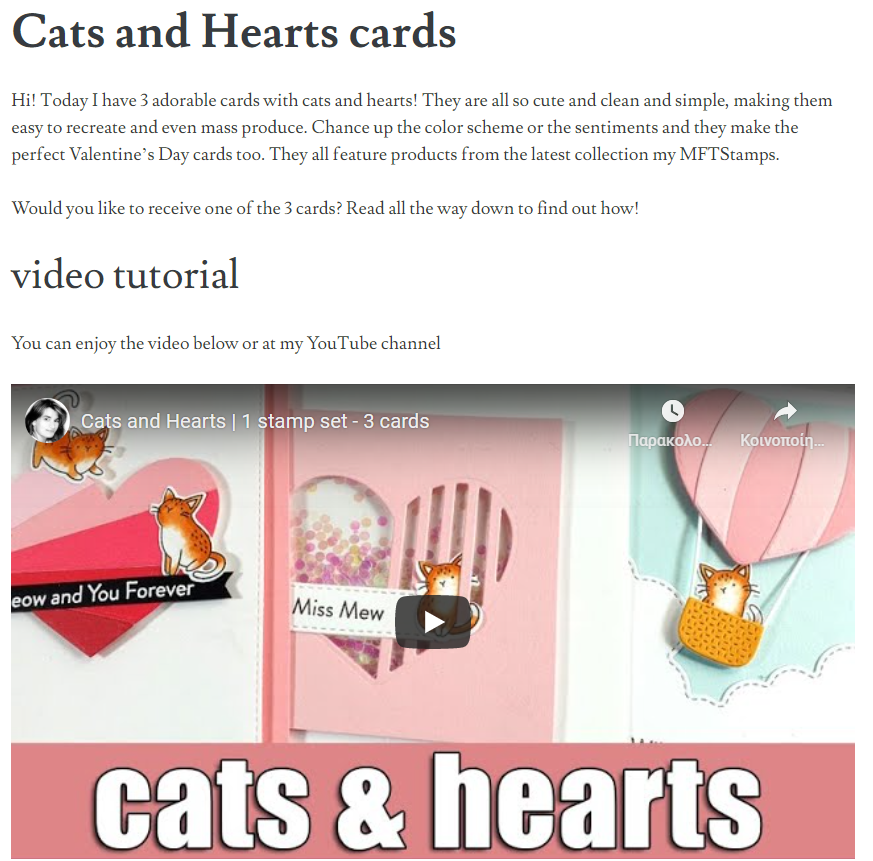 Source: http://www.clips-n-cuts.com/
Source: http://www.clips-n-cuts.com/
Linking to extra content offers your followers a complete reading experience and also enhances your post rankings. Just try to think outside of the box!
Extra Tip: Focus on utilizing links inside your blog post instead of banner ads. Your audience is more likely to click on your affiliate links than banner ads so you should not put a lot of effort into these ads.
4. One Product vs Multiple Products
Is it better to promote one single product or multiple products in the same post? The answer is – it all depends on the niche! If you’re in a broader niche, like a DIY niche, for example, you can easily promote several products. It will be more beneficial for your followers to provide them with a full list of products and a complete solution to replicating your project successfully.
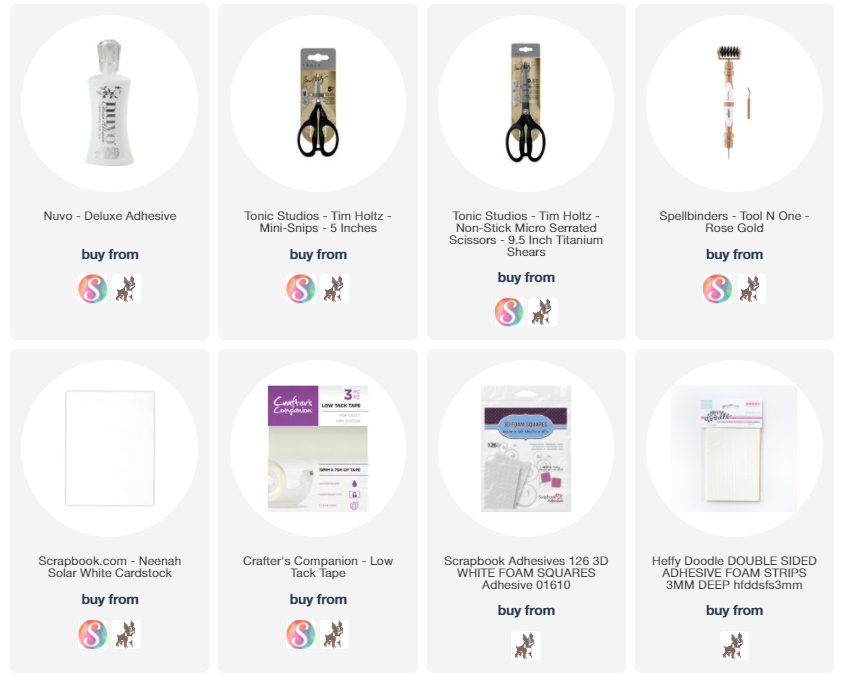 Source: http://www.clips-n-cuts.com/
Source: http://www.clips-n-cuts.com/
Keep in mind that, even though you want to generate as many clicks and conversions through your affiliate links as possible, it’s important to be sincere and not to overdo it by crowding your content with affiliate links. This way you will maintain an honest relationship with your readers.
5. Multiple Merchants per Product
If you want people to buy your recommended products, it’s best to link to more than one merchant for the same product. The optimum number can be found through testing, but the idea here is that when you link to multiple shops, your followers feel they have a choice and comfort to buy from the merchant they like best and this, in turn, increases your conversions.
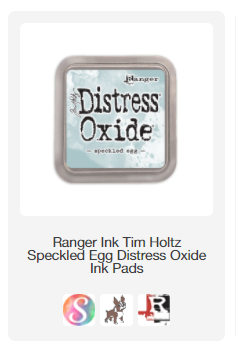
6. Devote Time to Tracking Revenue Generated from Different Products and Merchants
You can learn quite a bit about your followers’ preferences with the analysis of the statistics and this will allow you to implement some changes and keep your sales up. It’s wise to get a clear picture of which the most popular products are, where your clicks originate from (blog, YouTube, other social), where a particular audience loves to shop often, or even when the best time to post is - when you have an insight into these parameters, then you can use affiliate links in different ways to generate a higher number of clicks and conversions.
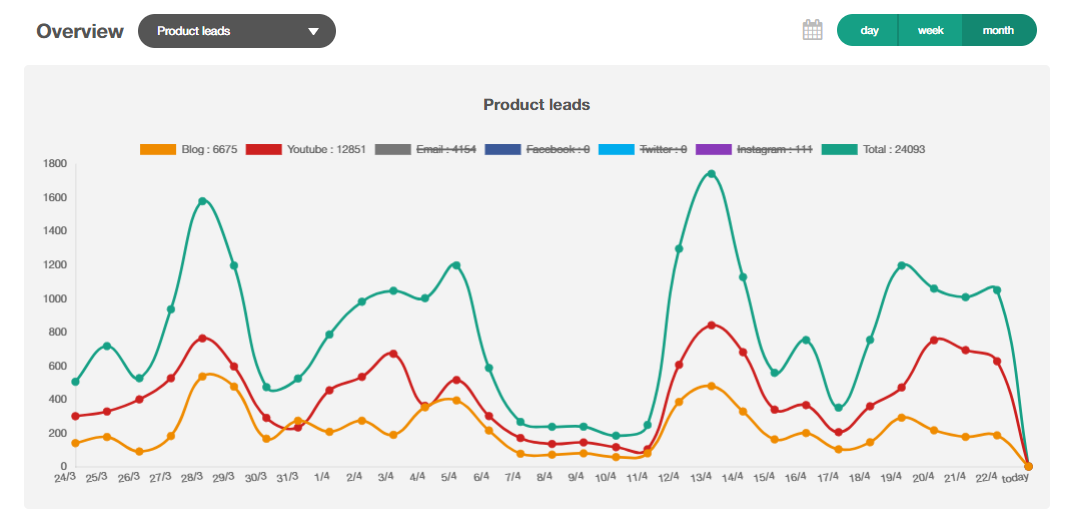
7. Email Newsletter
The relationship is the easiest way to establish trust with your readers and promote your products. Thus, a newsletter is one of the most essential tools in keeping your followers in the loop. When it comes to affiliate marketing, it is well worth building up your audience via email and using it to create a high-converting funnel for recommending products. A newsletter subscriber is usually a loyal reader, focused on a specific niche, and for this reason, integrating affiliate links in your newsletter can noticeably increase the chances of generating sales.

8. Use Social Media to Promote Links
Blog posts are not the only places online where you can include your affiliate links. Social platforms such as Facebook, Twitter, Instagram, and Pinterest are places where millions of people spend a lot of their time every single day. Social platforms are powerful sources of huge traffic that you can tap into. If you learn how to use Facebook groups, fan pages, and other assets that these platforms offer, you can get thousands upon thousands of people to click your affiliate links.
Tip! Customize the preview of a product affiliate list and decide what your followers see when you share it on social media.
A great place to add multiple affiliate links is in your Instagram bio:
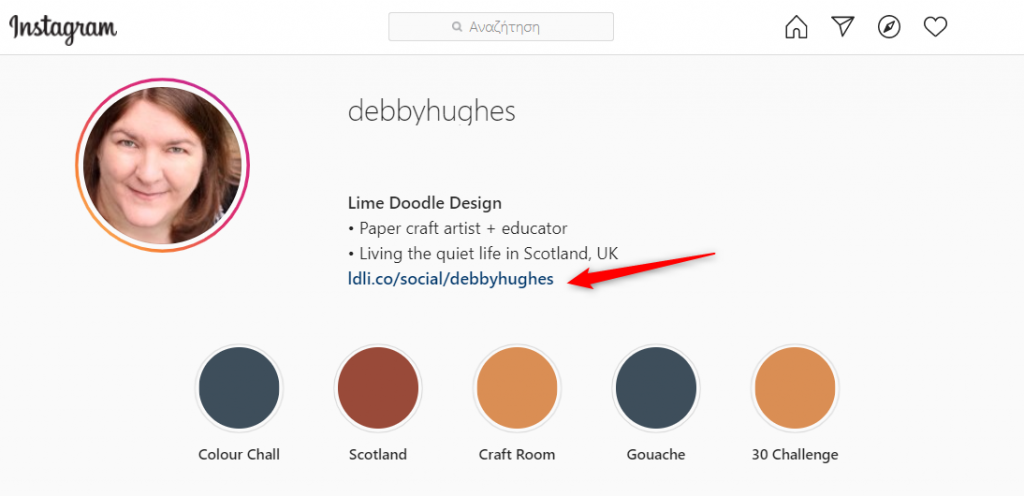
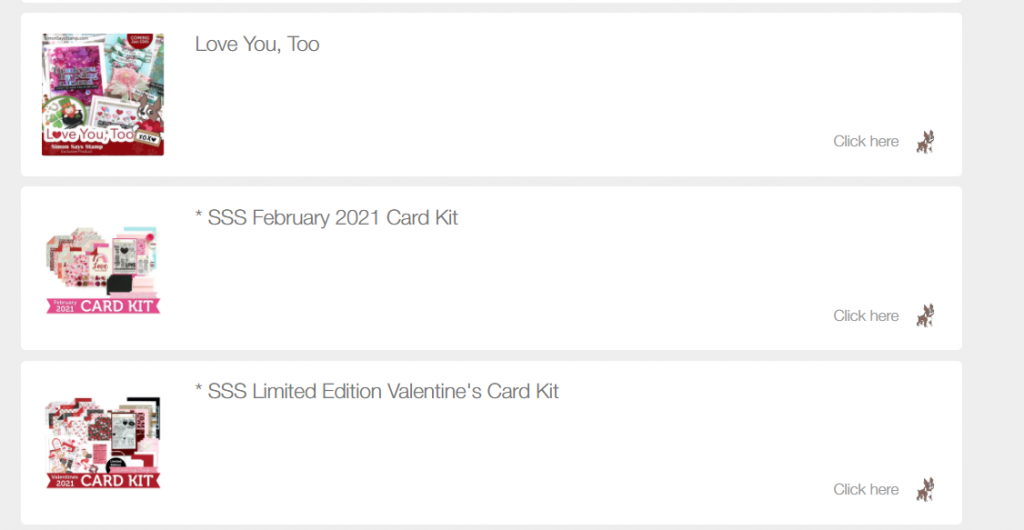 Source: https://limedoodledesign.com/
Source: https://limedoodledesign.com/
You can also monetize your YouTube videos by adding affiliate links in the description.
 Source: http://www.clips-n-cuts.com/
Source: http://www.clips-n-cuts.com/
Keep in mind that you first need to check what places allow what types of links because, for example, not every group may allow any affiliate links, but if you manage to find only a few social places to promote your affiliate products, you may get a huge reward.
A sneak peek of some other important factors that will help you increase your sales:
- Choose affiliate partnerships that are relevant to your niche.
- Recommend only quality products from trusted merchants.
- Promote products by writing how-to guides with quality and helpful reviews for your audience.
- Tell stories to create an intimate relationship with your audience.
- Create “resource pages” which is also a great section to place your affiliate links. On resource pages, readers can get resources on certain topics of their interest. You can monetize these pages with relevant affiliate links.
- Always be SEO friendly. Make all your affiliate links SEO friendly by adding a “nofollow” in the HTML Meta tags of your blog and limiting the number of affiliate links per page. Read here more.
- Pay attention to the peak shopping times of the year. Make sure to deploy your affiliate promotion during Black Friday/Cyber Monday, December, Sale events.
- Get special deals from merchants and create special posts for your readers with relevant affiliate links.
These are our best techniques that will drive your visitors to click on your affiliate link. The more they click, the more sales you get!

